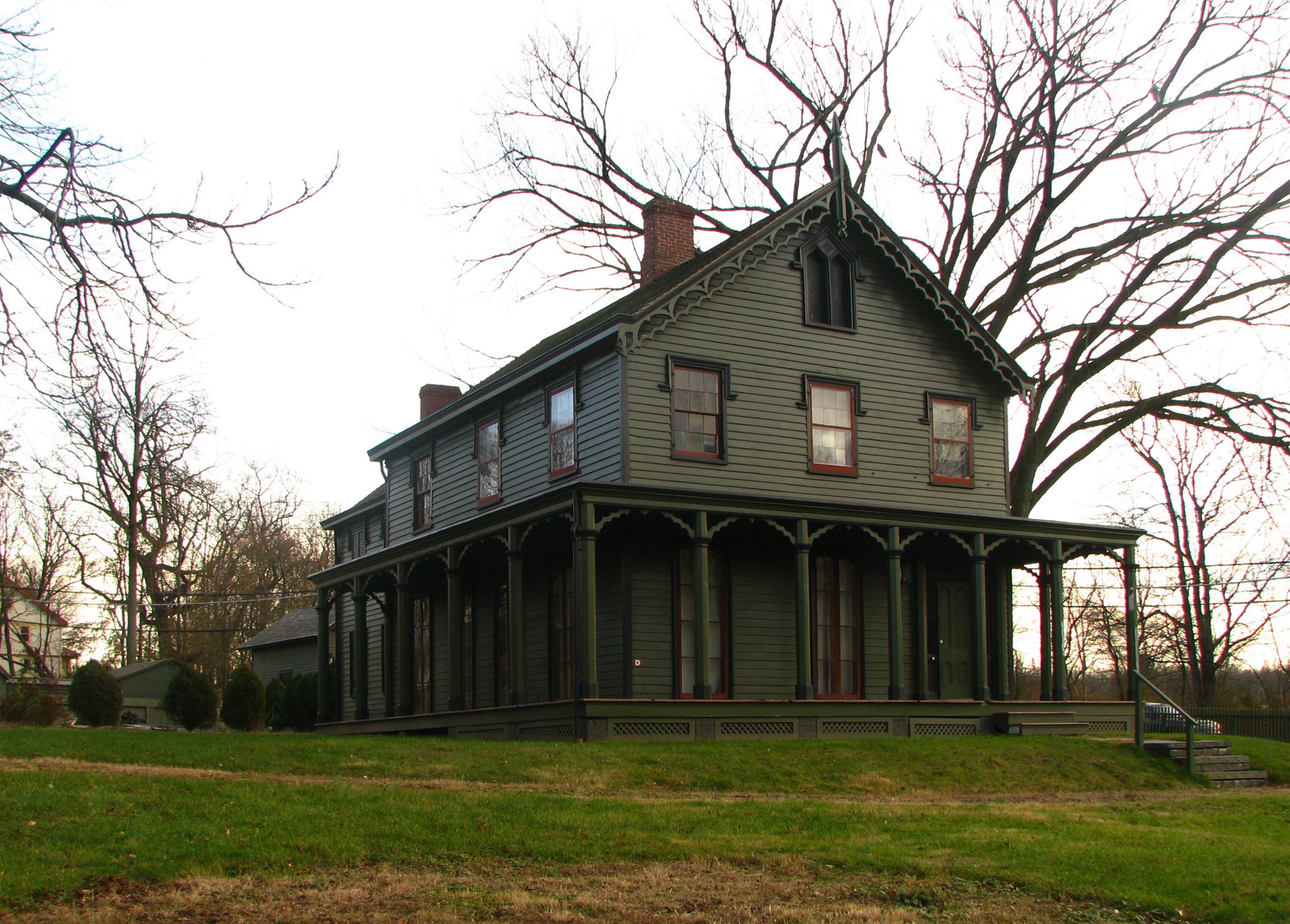Parsonage #10
The Parsonage is located on its original site on Arthur Kill Road at the corner of Clarke Avenue. It was built in 1855 as home for the pastor of the Dutch Reformed Church (now demolished) that once stood nearby.
The Parsonage is an example of Carpenter Gothic style, a form of Gothic Revival architecture. The Parsonage has the characteristic exterior woodwork of the style (sometimes called gingerbread), as well as many original interior features. The building has two stories and a one-story porch on its front and two sides.
In 1769, the Reformed Dutch Church built an edifice on what is now the corner of Center Street and Arthur Kill Road (not far from the Voorlezer's House which had been its meeting house in the previous century). This church was initially formed with support from the Reformed Dutch Church in Port Richmond as well as an informal alliance with local Presbyterian congregants. The building was destroyed by the British in 1776, and in 1808 a new church was built on the site. By the 1850s, the church was ready to seek its first full-time resident pastor and a parsonage building committee was formed, consisting of H. B. Cropsey and Richard Tysen.
Between 1855 and 1875, the Parsonage was occupied by four successive ministers to the church (which was officially called the South Reformed Dutch Church to distinguish it from the Port Richmond congregation on the island's north shore), and a kitchen extension was added to the rear of the residential structure.
The first occupant, Rev. Thomas Ruggles Gold Peck, who had already begun serving as pastor by commuting from Brooklyn, was noted for his “very energetic” personality. In 1859, he married Susan Egbert and subsequently departed Staten Island to work at the Huguenot Church in Charleston, South Carolina. Rev. Peck was succeeded by Rev. Erskine N. White, who served as the minister from 1859 to 1862. Rev. White was married to Eliza T. White and had two sons who were baptized at the church during that time.
Rev. Jacob Fehrman, who served the congregation between 1863 and 1866, resided in the Parsonage with his wife Elizabeth, daughter Cornelia, and son Thomas Moore, along with one female servant. Rev. James H. Sinclair was the last full-time minister at the parish, between 1866 and 1875. He resided in the Parsonage with his wife, Francis, their five children, and one servant.
By 1875, the congregation was struggling, and the consistory was forced to rent out the Parsonage to private individuals as a means of generating income while maintaining services with a part-time minister. The first private occupant was Ann Guyon Mundy, who moved in with her family after the death of her husband, Dr. Crowel Mundy, and stayed for about a decade until ca. 1885.
In 1878, the South Reformed Dutch Church ceased to exist as a congregation, and the church building was sold by the mid-1880s.
In 1886, Leah and William L. Flake purchased the Parsonage property and moved in with their daughter Lottie. The following year, a son, William L. Flake, Jr., was born. In the ensuing years the house was occupied by the four members of the Flake family along with extended family members and servants. William L. Flake, Sr. was a real estate, loan, and insurance broker. After her husband’s death ca. 1933, Leah Flake continued residing in the Parsonage until her death in 1940. During the Flake family’s time at the house, the northeast side porch was enclosed, an extended dormer was added, and a greenhouse was built on the southwest side. These alterations were later removed.
Between 1941 and 1969, Lottie and William L. Flake, Jr. leased the Parsonage to Dr. Henry G. Steinmeyer (1886-1980), a World War I veteran, dentist, and historian, who lived there with his wife Elinor (1886-1968) and son Henry Jr.
Dr. Steinmeyer, an active member of the Staten Island Historical Society, continued to live in the Parsonage even after it was sold to the City of New York in 1953 to become part of Historic Richmond Town, departing after his wife’s death in 1968.
Several other resident caretakers occupied the Parsonage between 1969 and 1981, and administrative offices of the Staten Island Historical Society were briefly housed there in the 1980s. Between 1993 and 1995 alterations were made, such as the addition of a public restroom and industrial kitchen, and an establishment called The Parsonage Restaurant was installed in the structure. The restaurant ceased operations in 2008, and in 2013 funding from the New York Community Trust supported research and analysis in preparation for future activities in support of Historic Richmond Town’s mission.
The building was designated an official New York City landmark by the New York City Landmarks Preservation Commission in 1969. It is currently awaiting restoration and is not open to the public.

